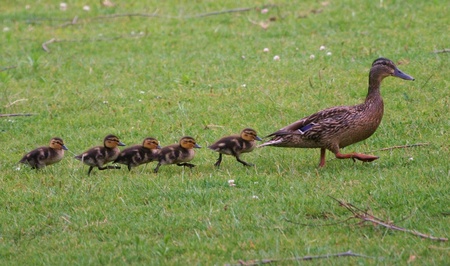A Few Tips When Raising Baby Ducks
October 27, 2017
When deciding if you’re ready to raise baby ducks on your farm or in your backyard—or in your apartment after watching too many Friends reruns, though it’s probably bad idea—there are quite a few things to consider before diving in. First and foremost, experience with any kind of poultry will go a long way toward raising ducks in addition to plenty of research for providing a full understanding of what this process entails. It does no one any good to start raising ducks only to discover it was more than they could handle. Hopefully, this handful of tips will help provide an adequate picture of what raising baby ducks involves and help you decide if you’re ready.
Safety Considerations
To begin, it’s absolutely important to remember that ducks could have Salmonella germs on their bodies (beaks, feet, feathers) or in droppings, even if the animal appears clean and healthy. These germs could also get on coops, cages, plants, hay, or soil within the ducks’ living area. As well, these germs can get onto the shoes, clothing, and hands of those handling the ducks or working or playing in their living area.
People can contract Salmonella after putting their hands or other things that made contact with duck droppings around or in their mouths. Children are particularly at risk due to their immune systems still developing and due to the fact that they’re more likely to put fingers or other things in their mouths. It’s crucial that people wash their hands soon after handling ducks or any item in their living area because any Salmonella germs on their hands could easily spread.
Feeding
Once the Salmonella risks are understood, and people still wish to raise ducklings, one of the most important things to remember first is simple—don’t feed your ducks without having any water present. Water not only helps get feed down, but it also helps clear beak vents, so make sure baby ducks always have water access at least one hour before it’s time to feed. For food, try chick starter containing 20 percent protein for their first 2.5 months before moving to 15 percent grower between weeks 10 and 18 and then 16 percent layer from then on.
While ducklings don’t have teeth, they welcome finely chopped vegetables, fruits, and greens along with small worms and insects as treats. For those wondering, Manuka honey would not be ideal to feed to ducks, but it can still help via wraps in the event of cuts or scratches. Baby ducks eat much more than chicks, so they can consume chick starter, specifically non-medicated types. Also, because they need more niacin, you can mix brewer’s yeast into the feed to aid in their bone development.
Water
Baby ducks, as with most animals, need clean water, which chick fountains can easily provide. They will also likely play in their water and make a mess, so remember to clean it regularly. The water should be less than ¼" deep, which ensures the ducks can escape easily and avoid drowning. Ducks don’t produce their waterproofing oil before four weeks old, when their mothers typically apply it, so avoid swimming them too soon.
Shelter
In addition to escape from the elements and predators, ducks require seclusion and quiet through the use of their shelter, which must be large and well-ventilated enough to allow ducks to groom and fully extend their wings.
Flight
Most commercial ducks cannot maintain flight due to their size, often staying around a solid source of water, food, and shelter. However, migrating species like Mallards may or may not stick around once they reach adulthood.
Eggs
Duck eggs may be used just as chicken eggs would be, but remember how their size difference could affect recipe proportions. Duck eggs, in addition to being larger, have proportionally larger yolks and thicker whites compared to chicken eggs, so overcooking them leaves them rubbery. A lot of people like duck eggs for baking purposes, believing their higher protein content allows cakes to rise and remain risen whereas the higher fat content adds more flavor and richness.
Copyright: marclschauer / 123RF Stock Photo


.jpg)



